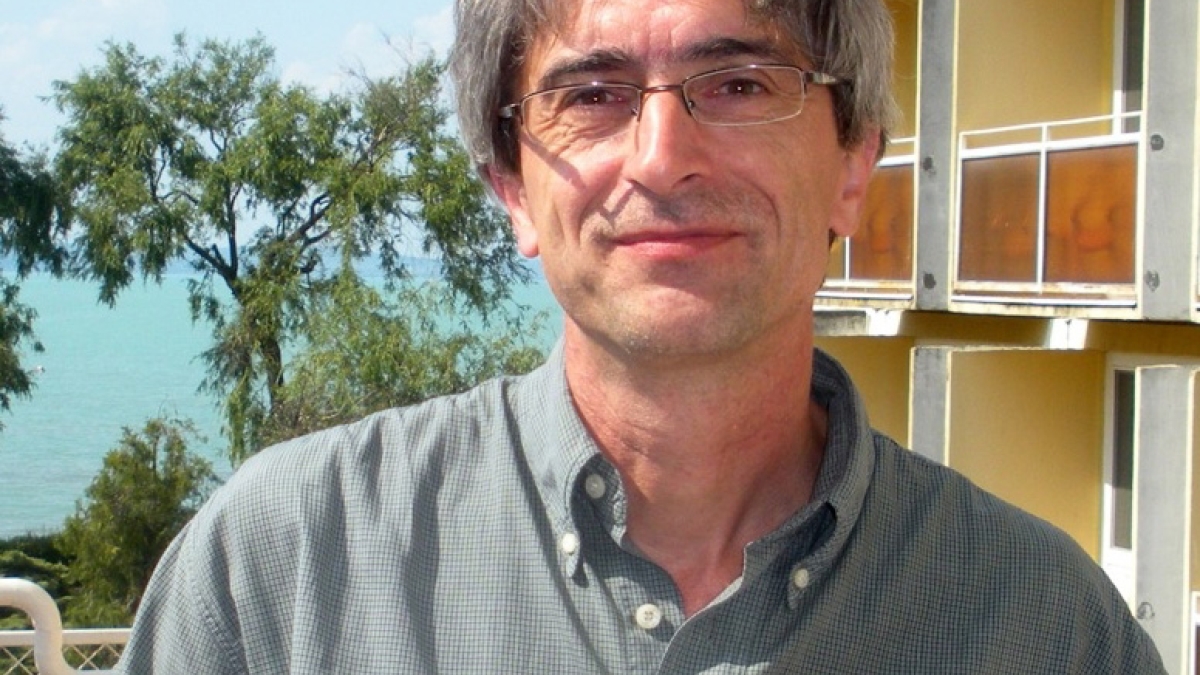Mihály Pósfai on campus as visiting professor

Mihály Pósfai, a member of the Hungarian Academy of Sciences (HAS), arrived in Tempe last week and will be in residence as an ASU visiting professor during March doing microscopy research.
In 2010, Pósfai, a former ASU scientist, was elected a member of the HAS, an organization of scientific notables that has had a long and distinguished membership reflecting the rich and fruitful scientific traditions of Hungary. Election to a National Academy of Sciences is one of the highest honors bestowed on scientists in their respective countries.
The HAS has 365 members. New members are elected every three years through an elaborate election process. An interesting rule is that the number of members younger than 70 cannot exceed 200 (Posfai is 49). Pósfai reports that a noteable consequence of being a member is that some people laugh significantly louder when you tell a joke than they used to.
Pósfai was a postdoctoral research associate at ASU from 1992 to 1994 and again from 1996 to 1998 in the 7*M research group of Professor Peter Buseck in the then Departments of Geology (now School of Earth and Space Exploration) and Chemistry. Since leaving ASU he has been on the faculty and is currently professor in the Department of Earth and Environmental Sciences, University of Pannonia, a relatively new university in Hungary.
While at ASU, he started his dual areas of research acclaim: a) Characterization of individual species in atmospheric aerosol particles to understand their formation and transport and to learn about their role in atmospheric processes and in global climate change, and b) Biologically controlled mineralization in magnetotactic bacteria, and synthesis and characterization of the physical and chemical properties of nanoparticles of iron sulfides and iron oxides.
”It is great to be back at ASU. I arrived here for the first time exactly 20 years ago as a postdoc. The campus has impressively expanded since then but it still feels like home, with many familiar faces and a vibrant atmosphere,” says Pósfai. ”The first week was spent by settling in, getting a glimpse of the wonderful new electron microscopes, and starting on new projects in environmental mineralogy.”
During his month on campus, Pósfai will be working on both atmospheric chemistry problems, primarily on whether or not the structural variations in soot are related to its bulk properties such as toxicity. He will also be looking at biominerals; a new project is underway to better understand the role of algae in the precipitation of calcite from lakewater.
Pósfai and Buseck have had a continuing collaboration through the years. They most recently had a paper on ”Nature and climate effects of tropospheric aerosol particles” appear in the 2010 Annual Review of Earth and Planetary Sciences. In 1998 two of their papers were published in Science about electron microscopy of bacteria that contain magnetic nanocrystals. One of those was co-authored with ASU researchers R. Dunin-Borkowski and M. McCartney of the Department of Physics.
The election of Pósfai is an honor both to his home institution and to ASU, which helped foster the creativity of this celebrated and relatively young scientist.